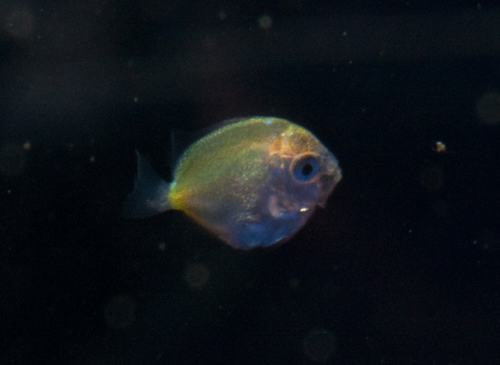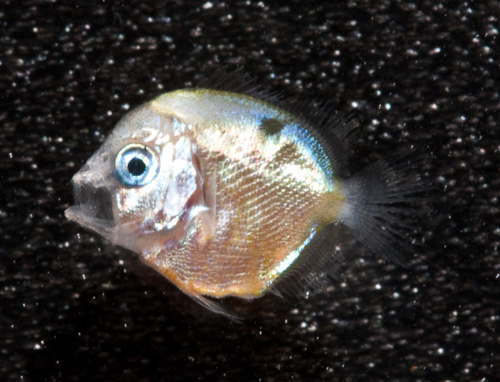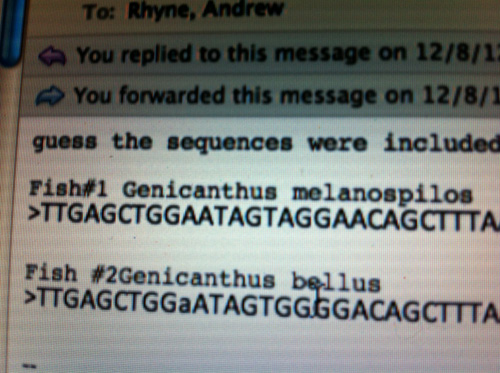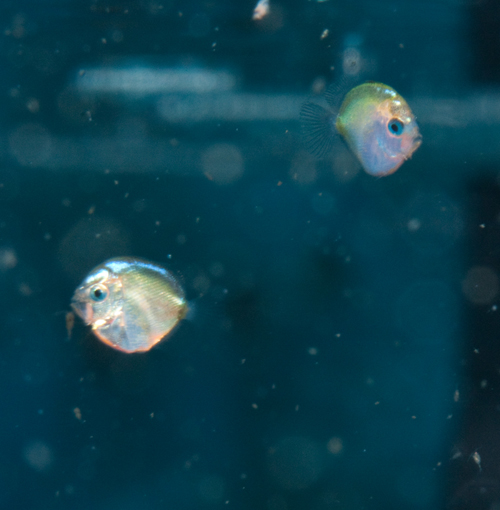Last summer I reported on reefs.com that I had raised a number of marine angelfish (around a dozen in all) to more than one month of age using only cultured copepods obtained from Algagen. In each case, the late-stage larvae began to show a marked increase in pigmentation and changes in behavior that often coincide with settlement. Although I have yet to get any angelfish to settlement, I do consider this to be something of an accomplishment. I had no way of knowing which species of angelfish I was dealing with as we have at least five species in our reef tank that may be mated pairs. As I reported in an earlier post, I sent a couple of specimens off to Dr. Andrew Rhyne at Roger Williams University in Rhode Island. The plan was that he would have their DNA sequenced so that we could get a positive species identification while waiting to finally get some through metamorphosis.
In the months that followed, shifts in priority related to a different kind of rearing (our son, Finn), and recovering from our brush with a massive hurricane (Sandy), took some attention away from my aquaculture efforts and little progress has been made. The angelfish specimens were starting to fade into distant memory when, a few weeks ago while eating dinner, I received a text from Dr. Rhyne telling me that the results of the sequencing were back and that the two specimens I had sent him were actually two different species: Genicanthus melanospilos and Genicanthus bellus. This was exciting news as very few Genicanthus species had been raised in captivity and the two well-established pairs in our reef tank would likely give me more opportunities to try.
This well-timed news came just as I was gearing up to get some of my larval tanks back on-line, and restart the copepod cultures that had been lost in the wake of the storm. This week we made our first pelagic egg collection from the reef tank since things are back to normal, and although I have no idea which species are represented by this latest haul, perhaps there will be some more Genicanthus in the mix.














This is so cool. Todd, you are my reefing hero.
Which species of copepod was that, Todd?
Acartia, Parvocalanus, and Pseudodiaptomus.